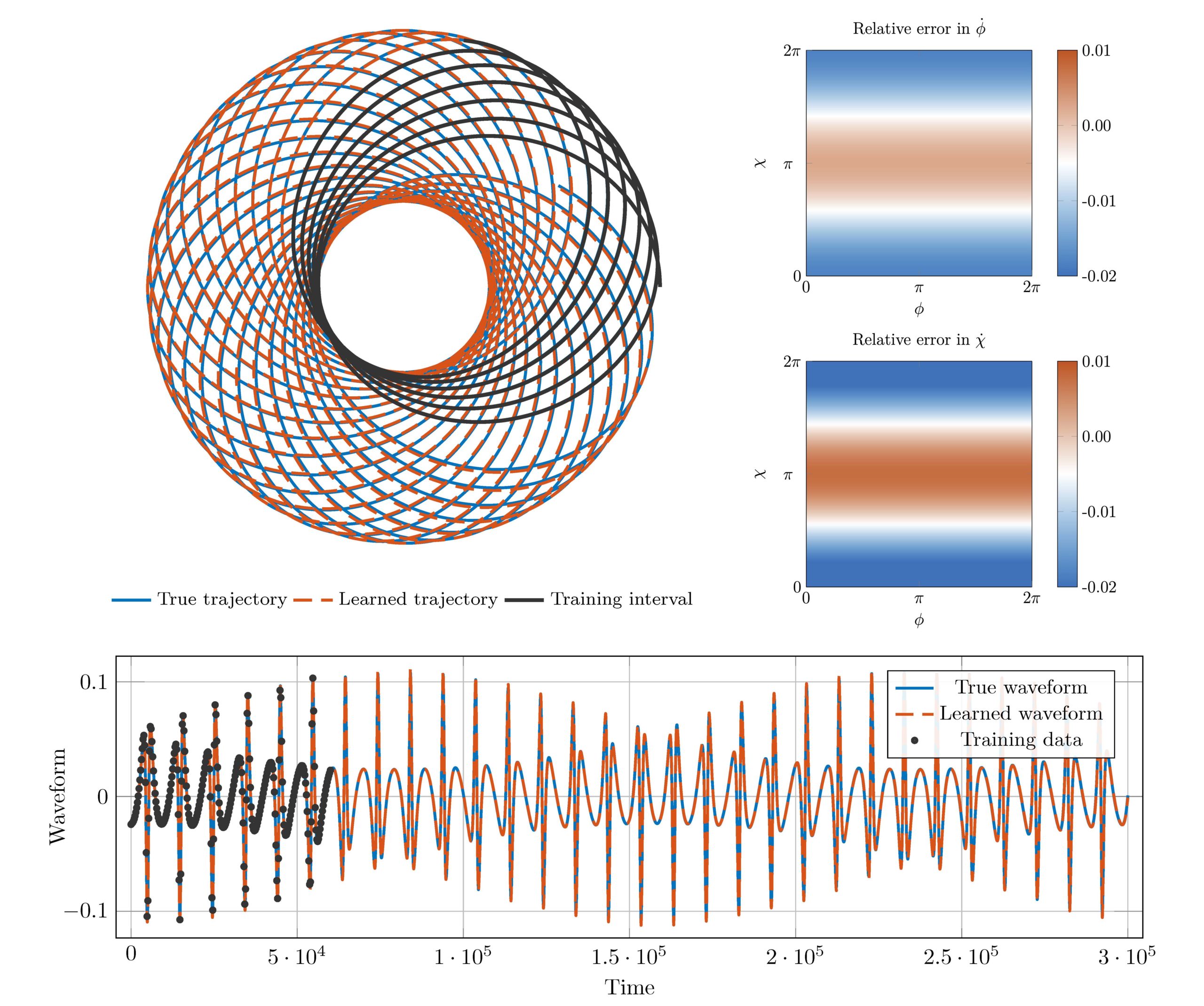Submission information
Submission Number: 133
Submission ID: 233
Submission UUID: 9576eb83-a8f9-4ef6-93be-5f902c965918
Submission URI: /form/project
Created: Mon, 12/13/2021 - 07:17
Completed: Mon, 12/13/2021 - 07:17
Changed: Mon, 08/29/2022 - 00:25
Remote IP address: 71.234.46.81
Submitted by: Alfa Heryudono
Language: English
Is draft: No
Webform: Project
| Project Title | Learning dynamical systems with GPU-enabled scientific machine learning |
|---|---|
| Program | Northeast |
| Project Image |

|
| Tags | gravitational-waves (597), machine-learning (272) |
| Status | Complete |
| Project Leader | Alfa Heryudono |
| aheryudono@umassd.edu | |
| Mobile Phone | |
| Work Phone | |
| Mentor(s) | |
| Student-facilitator(s) | Brian Cornet |
| Mentee(s) | |
| Project Description | It has been recently demonstrated that dynamical system models can be discovered through scientific machine learning techniques. In this data-driven process, measurements of the system are made. From this data, an optimization problem can be solved to isolate the most likely physical model (differential equations) that would deliver these physical measurements. This process is computationally challenging, both in the generation of data (which, in our case, comes from an expensive, high-fidelity numerical solver) and in solving this optimization problem. This project aims to accelerate both steps by using Julia, a high-performance language that maintains many benefits of a high-level interpreted language like Matlab or Python. In this project, the student will port existing Python code into Julia and provide time-to-solution performance statistics comparing the two. The student will also use Julia's library DiffEqFlux.jl for learning neural differential equations and Hamiltonian neural networks. The DiffEqFlux.jl library runs on both GPUs and CPUs, and the student will explore speedups that are achievable on NVIDIA's V100 and A100 GPUs. |
| Project Deliverables | |
| Project Deliverables | |
| Student Research Computing Facilitator Profile | |
| Mentee Research Computing Profile | |
| Student Facilitator Programming Skill Level | |
| Mentee Programming Skill Level | |
| Project Institution | |
| Project Address | |
| Anchor Institution | NE-MGHPCC |
| Preferred Start Date | 12/01/2021 |
| Start as soon as possible. | No |
| Project Urgency | Already behind3Start date is flexible |
| Expected Project Duration (in months) | |
| Launch Presentation | |
| Launch Presentation Date | |
| Wrap Presentation | |
| Wrap Presentation Date | |
| Project Milestones |
|
| Github Contributions | |
| Planned Portal Contributions (if any) | |
| Planned Publications (if any) | |
| What will the student learn? | The student will learn how to program in the high-performance computing language Julia, using scientific machine learning libraries, and accelerating machine learning with single and multiple GPUs. |
| What will the mentee learn? | |
| What will the Cyberteam program learn from this project? | |
| HPC resources needed to complete this project? | The student will need access to one and multiple GPUs. At UMassD we have a shared GPU resource they can use. However, for exploring multiple GPUs we might need to consider resources through cyberteams. |
| Notes | |
| What is the impact on the development of the principal discipline(s) of the project? | |
| What is the impact on other disciplines? | |
| Is there an impact physical resources that form infrastructure? | |
| Is there an impact on the development of human resources for research computing? | |
| Is there an impact on institutional resources that form infrastructure? | |
| Is there an impact on information resources that form infrastructure? | |
| Is there an impact on technology transfer? | |
| Is there an impact on society beyond science and technology? | |
| Lessons Learned | |
| Overall results |